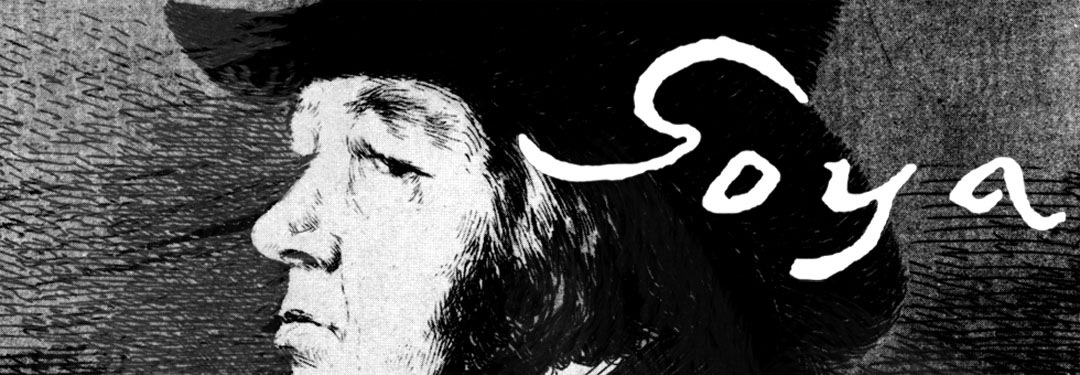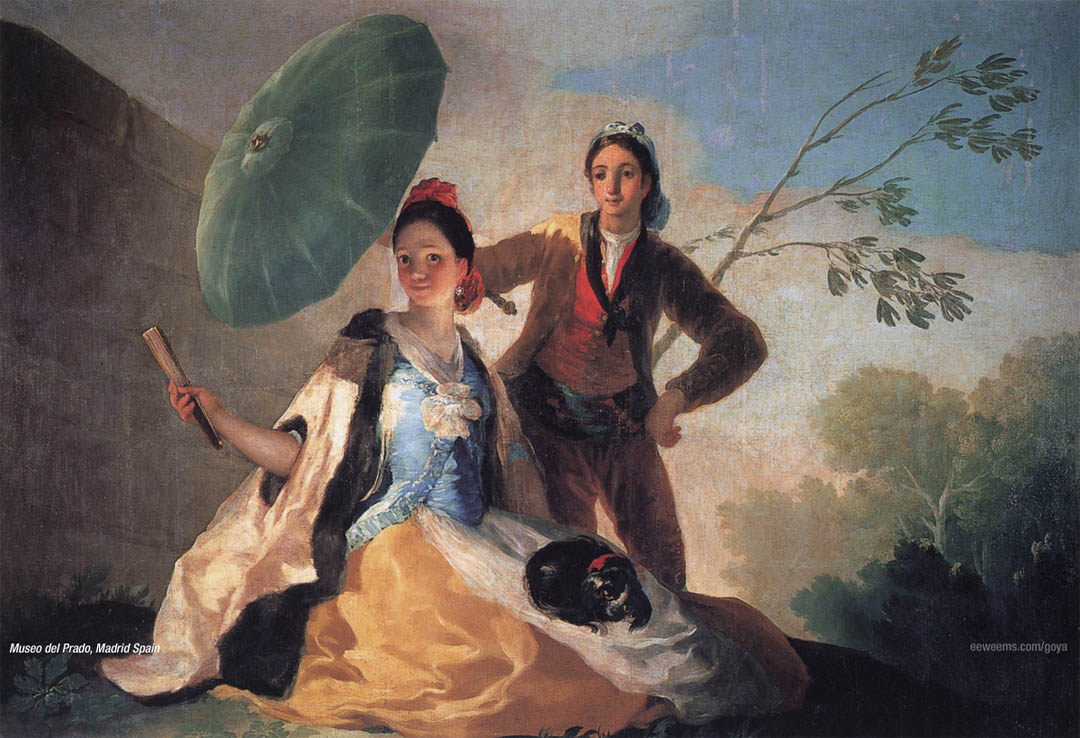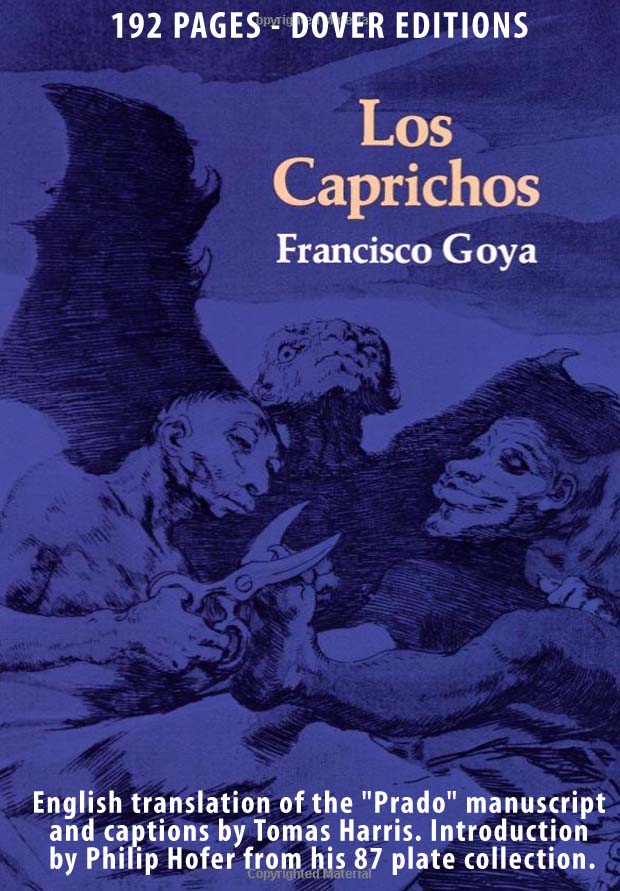The Parasol
The Parasol
El quitasol
1777 Oil on linen
40 3/4 inches by 59 1/4 inches
104 cm x 152
Museo del Prado, Madrid Spain
"The Parasol" was painted as a cartoon for a tapestry weaving for the winter residence of future King Charles IV, and his wife Maria Luisa. The finished tapestry was hung in the dining hall of the couples Prado Palace outside Madrid.
In 1777 Goya completed the first group of his memorable tapestry cartoons, among which is The parasol – brilliantly colored, ravishingly painted and yet, somehow, more than an innocent decoration. Simplicity itself, the picture shows a smiling, bright-eyed young girl seated on the ground with her skirt and cloak billowing about her. She holds a folded fan in one hand and supports a adorable black and white pup on her lap. With her is a sturdy young majo, attentive and obviosly ravished by her beauty, who shields her face from the bright sun with a brilliant green parasol. Suggestions of a stone wall to one side, a wind-whipped tree and leafy glade to the other, do nothing to distract from the two figures. Goya's people are amusing – the coquettish smile and directness of the girl as she gazes, it seems, into the very eyes of the viewer bring forth a smile from any man. Yet they are real in thaty the subjects of Goya's predecessors and competitors in this vein are not. There is, as a critic says, 'a positive pinch of earthy actuality' – and an avoidance of sentimentality – that is quite unique and that is to grow in importance as Goya works for the Royal Tapestry Manufactory."
From the book The World of Goya, by Richard Schickel, Time-Life Books, 1969, page 53
AMAZON
Goya The Terrible Sublime - Graphic Novel - (Spanish Edition) - Amazon
"From this headlong seizure of life we should not expect a calm and refined art, nor a reflective one. Yet Goya was more than a Nietzschean egoist riding roughshod over the world to assert his supermanhood. He was receptive to all shades of feeling, and it was his extreme sensitivity as well as his muscular temerity that actuated his assaults on the outrageous society of Spain." From Thomas Craven's essay on Goya from MEN OF ART (1931).
"...Loneliness has its limits, for Goya was not a prophet but a painter. If he had not been a painter his attitude to life would have found expression only in preaching or suicide." From Andre Malroux's essay in SATURN: AN ESSAY ON GOYA (1957).
"Goya is always a great artist, often a frightening one...light and shade play upon atrocious horrors." From Charles Baudelaire's essay on Goya from CURIOSITES ESTRANGERS (1842).
"[An] extraordinary mingling of hatred and compassion, despair and sardonic humour, realism and fantasy." From the foreword by Aldous Huxley to THE COMPLETE ETCHINGS OF GOYA (1962).
"His analysis in paint, chalk and ink of mass disaster and human frailty pointed to someone obsessed with the chaos of existence..." From the book on Goya by Sarah Symmons (1998).
"I cannot forgive you for admiring Goya...I find nothing in the least pleasing about his paintings or his etchings..." From a letter to (spanish) Duchess Colonna from the French writer Prosper Merimee (1869).
GOYA : Los Caprichos - Dover Edition - Amazon





